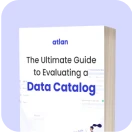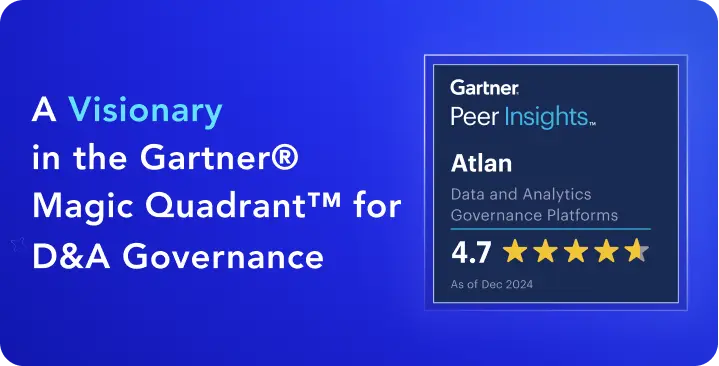Data Observability vs Data Testing: 6 Points to Differentiate

Share this article
Data observability centers on real-time monitoring of data systems to detect anomalies, ensure system health, and understand data flows. But, data testing focuses on validating data for accuracy, consistency, and integrity against predefined standards.
While they both aim to ensure data accuracy and reliability, they are not one and the same.
In this article, we’ll learn the key differences between data observability and data testing, their unique roles and how they complement each other in data management.
Let us dive in!
Table of contents #
- What is data observability?
- What is data testing?
- 6 Key differences you must know
- Data testing vs observability: Which one is right for you and when?
- Data observability vs data testing: A tabular difference
- Summary
- Related reads
What is data observability and what are its components? #
Data observability refers to the ability to fully understand, monitor, and gain insights from your data’s health and quality throughout the data lifecycle. It ensures that you can quickly diagnose and resolve data issues, understand data lineage, and ensure the robustness of data systems.
Think of data observability as the “health monitoring system” for your data infrastructure, similar to how application observability provides insights into how software is running, its performance, and any potential issues.
And here are the key components of data observability:
1. Data freshness #
- Data freshness refers to how recent or up-to-date data is.
- Ensuring data freshness is critical in many applications where the value of data diminishes over time.
- For instance, in financial transactions or real-time monitoring systems, data needs to be nearly instantaneous to be relevant.
- Observing data freshness ensures that data pipelines are ingesting and processing data in a timely manner.
2. Data quality #
- Data quality involves monitoring data for accuracy, consistency, and reliability.
- Poor data quality can arise from various sources like erroneous data entry, system glitches, or data pipeline failures.
- Data observability tools check for anomalies, missing values, or inconsistent data formats to ensure that the data being used is trustworthy and accurate.
3. Data lineage #
- Data lineage offers a visual representation of where data comes from, where it moves over time, and how it gets transformed. It’s essentially a data map.
- Observing data lineage helps in tracing errors back to their source, understanding how data interrelates, and ensuring compliance with regulations by maintaining transparency in data processing.
4. Data volume monitoring #
- This monitors the amount or size of the data flowing through systems. Unexpected spikes or drops in data volume can indicate system failures, breaches, or other anomalies.
- Monitoring data volume ensures that infrastructure is scaled appropriately and that anomalies are quickly identified.
5. Latency measurement #
- Latency refers to the time taken for data to move from one point to another in a data pipeline.
- High latency can result in outdated information being used in decision-making processes.
- By measuring and observing latency, organizations can optimize their data pipelines for speed and efficiency.
6. Metadata tracking #
- Metadata is data about data. Tracking metadata means keeping an eye on the data’s schema, data types, descriptions, source, and more.
- This component of observability ensures that there’s context around the data, making it easier to understand, use, and manage.
7. Error rates #
- Monitoring error rates involves keeping track of failures or issues in data ingestion, processing, or transformation.
- High error rates can compromise data reliability and indicate deeper issues in the data infrastructure.
- Observing and acting on error rates ensures data integrity and system reliability.
8. Data lifecycle visibility #
- This component ensures visibility throughout the data’s entire lifecycle—from ingestion to storage, processing, and finally to its end use or archival.
- Visibility into the lifecycle enables better management, security, and compliance of data.
9. Infrastructure health #
- Infrastructure health pertains to the monitoring of the physical and virtual resources supporting the data ecosystem.
- This can include servers, storage devices, cloud resources, and network health.
- Ensuring infrastructure health is crucial to maintain data availability and performance.
10. Security and compliance monitoring #
- Given the increasing regulatory landscape, it’s vital to ensure that data is handled, processed, and stored in compliance with laws and standards.
- This component ensures that data is encrypted, access is controlled, and any breaches are swiftly detected.
Data observability is not just about monitoring but about gaining a deep understanding of the entire data ecosystem. By focusing on these key components, organizations can ensure that their data infrastructure is not only reliable and efficient but also that the data itself is trustworthy and valuable.
What is data testing and what are its components? #
Data testing is the act of validating the content, structure, and integrity of data. It ensures that data is accurate, reliable, and processed correctly across data transformation and data movement processes.
In simpler terms, it’s about asserting that the data’s input and output, given a specific transformation or process, adhere to defined expectations.
Here are the key components of data testing:
1. Data migration testing #
- This involves testing the data that has been migrated from a source to a target system to ensure that the data has been transferred accurately, without any corruption or loss.
- This is crucial in scenarios like system upgrades, database conversions, or merging platforms.
2. Data integrity testing #
- Data integrity testing ensures that the data remains accurate and consistent over its lifecycle.
- This might involve checking constraints, validations, and relationships like foreign keys in databases to ensure data remains uncorrupted.
3. Data accuracy testing #
- This is about verifying that the data accurately represents the real-world entity or construct it’s supposed to.
- For instance, a person’s age recorded in the system should reflect their actual age.
4. Data volume testing #
- Also known as data size or scalability testing, it checks the system’s capacity to handle specific volumes of data.
- This ensures that even as data scales, the system continues to perform optimally.
5. Data validation testing #
- This component checks if the data in the system is presented in the right format and follows the defined standards.
- For example, a phone number field shouldn’t accept alphabetical characters.
6. ETL (Extract, Transform, Load) testing #
- ETL testing involves validating that the processes used to move data between databases or systems (like in a data warehouse setup) function correctly.
- It ensures that data extraction, transformation to fit the destination, and loading processes occur without data loss or corruption.
7. Business rule testing #
- This ensures that any business rules or logic applied to the data (like calculations, data derivations, and constraints) work correctly.
- For instance, a business rule might dictate that customers over a certain age receive a discount; this testing ensures such rules are correctly applied.
8. Boundary testing #
- This is about testing the data boundaries.
- For instance, if a system should accept an age value between 0 and 100, boundary testing would test values at or beyond these limits, like -1 or 101, to ensure the system responds correctly.
Data testing is vital to ensure that systems function accurately and reliably. By understanding and implementing these components, organizations can ensure they are operating on clean, consistent, and high-quality data, thus making more informed decisions.
Data observability vs data testing: 6 Key differences you must know #
In the previous two sections we learned the basics of data observability and data testing. Now, let’s delve into the comprehensive differences between data testing and data observability.
- Definition & purpose
- Nature
- Scope & application
- Frequency
- Granularity
- Outcome
Let us explain the differences in detail:
1. Definition and purpose #
Data testing involves specifically validating the content, structure, and integrity of data. The primary goal is to ensure that data is accurate, reliable, and processed correctly across various stages of the data pipeline.
Data observability is about having visibility into the health and performance of the entire data system. Its main goal is to understand, diagnose, and remedy issues in real-time and gain comprehensive insights into the data’s lifecycle.
2. Nature #
Data testing is typically reactive. Tests are designed based on pre-defined conditions or requirements, and they react by indicating a pass or fail when these conditions are met or not met.
Observability is proactive. Instead of just reacting to pre-defined conditions, observability tools continually monitor data and its systems, alerting you to any anomalies or unexpected behaviors.
3. Scope and application #
Data testing is applied at specific points in the data lifecycle. For example:
- Before and after transformations (to verify that transformations produce expected results).
- After data ingestion (to confirm the quality and format of ingested data).
- After data integration (to verify that combined datasets are coherent).
Data observability covers the entire lifecycle of data. This includes:
- Data lineage (tracing where data comes from and where it goes).
- Monitoring the health of data infrastructure.
- Keeping tabs on data quality metrics in real-time.
4. Frequency #
Testing is often intermittent. For instance, it might happen at certain intervals (e.g., after every ETL process), or before releasing a new data product or feature.
Observability is continuous. Tools monitor systems 24/7, ensuring that you’re always aware of the state of your data and infrastructure.
5. Granularity #
Tests are designed to check for specific conditions or requirements. For example, a test might check if all values in a column are non-null, if a dataset has a certain number of rows, or if the sum of a column matches an expected value.
Data observability provides a holistic view of the data ecosystem. Instead of focusing solely on specific test conditions, observability provides insights into data health, lineage, quality, volume, and distribution, among other metrics.
6. Outcome #
Data testing typically results in binary outcomes: pass or fail. If a dataset doesn’t meet the test conditions, it fails the test; otherwise, it passes.
Rather than a binary outcome like testing, data observability provides detailed insights. It gives you information on what might be causing an anomaly, suggestions on potential fixes, and helps in diagnosing issues.
While both data testing and data observability are essential for a robust data ecosystem, they serve different but complementary purposes. Ideally, a mature data environment will incorporate both, using testing to validate data and observability to continuously monitor and understand it.
Data testing vs observability: Which one is right for you and when? #
Choosing between data testing and observability isn’t necessarily an either-or situation, as both serve critical, albeit different, functions within the data lifecycle.
Here’s a detailed examination to help determine which approach, or combination of both, might be best for an organization’s specific needs:
1. Understand your organizational needs #
Project phase - Initial development
- Initial development: In the early stages of developing a data infrastructure, pipeline, or application, rigorous data testing is crucial.
- You’re setting the foundations, so you need to be certain that the data meets the requirements, transformations work correctly, and integration points don’t break.
Project phase - Ongoing operations and maintenance
- Once your data system is mature and operational, observability becomes vital.
- It provides continuous insights into the system’s health and behavior, allowing timely detection and resolution of any anomalies.
2. Data volume and complexity #
High
- For complex data ecosystems with vast amounts of data flowing through, observability becomes crucial.
- As data scales, manual or even predefined testing might not catch all issues. Continuous monitoring can alert you to anomalies in real-time.
Low to moderate
- If you’re dealing with smaller datasets or less complex pipelines, periodic data testing might suffice.
3. Operational criticality #
High
- If data drives critical operations - think financial transactions, healthcare data, or real-time analytics for decision-making - both rigorous data testing and robust observability are essential.
Low
- For less critical datasets or pipelines, periodic data testing alone might be sufficient.
2. Desired outcomes #
Problem detection
- Data testing: Helps in identifying whether data adheres to predefined conditions or requirements. If data breaks these requirements, it’s flagged.
- Data observability: It’s more about identifying unexpected problems or behaviors by continuously monitoring the data environment.
3. Root cause analysis #
- Data testing: Tells you that a problem exists but might not always give deep insights into the root cause, especially if the cause is outside of what’s being tested.
- Data observability: Provides a holistic view of the data ecosystem, making it easier to pinpoint where and why an issue occurred.
3. Resource Availability #
- Data testing: Requires setting up tests, which means you need resources who can define testing requirements, create the tests, and maintain them as the data system evolves.
- Data observability: Often requires sophisticated tools and platforms that can monitor data in real-time. These might come with higher costs, both in terms of finances and the need for specialized personnel to manage and interpret the observability platform.
4. Time and frequency #
- Data Testing: Often happens at intervals. It’s not continuous, so if an issue arises between tests, it might go unnoticed until the next testing phase.
- Data Observability: It’s continuous. This real-time nature ensures that anomalies can be detected and acted upon immediately.
For most organizations, a combination of both testing and observability ensures that data systems are both robust and resilient. Start with testing to validate and verify, and then introduce observability for continuous insights and health checks.
Data observability vs data testing: A tabular difference #
So we far, we’ve understood the differences between data observability and data testing. Now, let’s understand their differences even better in a tabular way:
| Aspect | Data testing | Data observability |
|---|---|---|
| Purpose | Validates data against predefined criteria and quality benchmarks. | Provides real-time visibility into the entire data system's health and performance. |
| Nature | Reactive – operates based on set criteria. | Proactive – continuously monitors data operations to identify anomalies and issues. |
| Outcome | Binary – typically a pass or fail based on the test criteria. | Detailed insights – comprehensive views of data's state, health, lineage, and potential issues. |
| Frequency | Intermittent – conducted at specific stages or intervals. | Continuous – ongoing monitoring 24/7. |
| Focus | Specific data properties and correctness. | Holistic view of the entire data environment. |
| Scope | Limited to predefined tests and conditions. | Covers the entire data lifecycle, monitoring flow, quality, transformations, and more. |
| Implementation | Requires defining, setting up, and executing tests. | Requires integration with observability tools and platforms that constantly monitor data operations. |
| Problem Detection | Identifies issues based on testing criteria. | Identifies unexpected behaviors by analyzing the entire ecosystem. |
| Root Cause Analysis | Flags that an issue exists, but in-depth analysis might be needed for root causes. | Provides insights into where and why an issue occurred due to comprehensive monitoring. |
| Resource Requirements | Need for defining and maintaining tests, which can be manual or automated. | Often involves more sophisticated tools/platforms and specialists to manage and interpret the data flow. |
Summarizing it all together #
Navigating the intricate labyrinth of data management, we often encounter the crossroads of data observability and data testing.
While observability zeroes in on understanding the health and intricacies of our data systems in real-time, data testing is our mechanism to validate and verify data accuracy and consistency.
As data continues to fuel our decision-making, appreciating the delicate dance between observability and testing becomes paramount for any data-driven organization.
Data observability and data testing: Related reads #
- Data Accuracy: Examples, Steps to Measure & Maintain [2023]
- Data Ingestion 101: Using Big Data Starts Here
- What is Data Integrity and Why Should It Be a Priority of Every Data Team?
- Top 5 ETL Tools to Consider in 2023
- Data Quality Metrics: Understand How to Monitor the Health of Your Data Estate
- Data Observability: Definition, Key Elements, and Business Benefits
- Data Lineage & Data Observability: Why Are They Important?
- Data Observability & Data Mesh: How Are They Related?
- Data Observability for Data Engineers: What, Why & How?
Share this article











